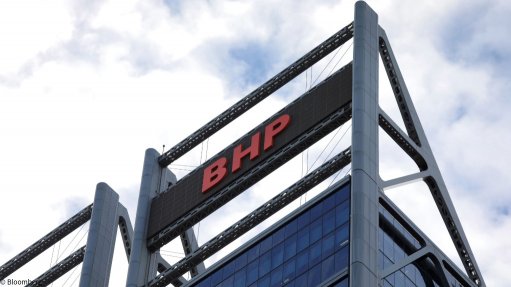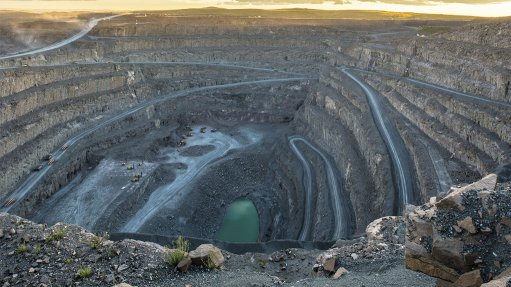Energizer expects better economics from feasibility at Madagascar project
Madagascar-focused Energizer Resources said last week a series of milestones at its flagship Molo graphite project, and recently updated mineral resources had led it to expect improved economics from a feasibility study currently under way.
The company’s shares jumped more than 16% in early trade on the TSX last week to C$0.185 a share, before falling back to C$0.165 apiece around noon.
The company in February published the results of a preliminary economic assessment (PEA) for the project, which had found it to hold an after-tax net present value (NPV), using a 10% discount rate, of $341.8-million and an after-tax internal rate of return (IRR) of 41%.
The project was expected to cost $162.04-mil- lion to construct and would produce about 84 000 t/y of 98% to 98.6% flake graphite, which could sell at an average market price of about $1 564/t. The project was expected to have a three-year payback period.
“The recent metallurgical results, indicating that nearly half (47.4%) of the graphite concen-trate produced from the Molo composite material submitted for analysis, at SGS, consists of large and jumbo flake graphite at a grade of 96.8% carbon, were certainly a pleasant surprise, as the highest quoted natural flake graphite prices are those for +80 (large flake) at purities greater than 95% carbon,” president and COO Craig Scherba said in a statement released last week.
Energizer added that it had managed to produce an ultra-high-purity concentrate of 99.9% carbon, with first-pass, single-stage hydrometallurgical purification, with all its graphite concentrate able to be upgraded to this purity level.
“We are also pleased to note that we can achieve high-purity grades through flotation or physical processing alone, which has significantly less expensive operating costs than achieving ultra-high-purity through chemical or pyrometallurgical methods,” Scherba said, noting this potentially positioned the company as one of the lowest-cost producers of ultra-high-purity graphite.
The latest metallurgical results were expected to positively impact on economics in the PEA, particularly the operating costs, the IRR and the NPV, with a full feasibility study expected in the fourth quarter.
The company hired consultant DRA to generate new capital expenditure and oper-ational expenditure figures based on the new metallurgical analysis, versus the existing numbers in the PEA study.
“We feel that Molo is well positioned to be a significant contributor to the global graphite supply, and we are striving to reach that goal despite the challenging capital market environment,” Scherba said.
Energizer initially discovered vanadium at the Green Giant project in 2007, and had established a National Instrument 43-101- compliant vanadium resource ranking the project as one of the largest known vanadium deposits in the world.
However, the company decided to develop a graphite mine instead, as the energy require-ments and capital costs associated with a vanadium mine were deemed too high.
The company said it set about to understand the graphite market beyond its insights already established with vanadium. “We found a rapidly evolving graphite market with over 84 exploration companies managing about 150 graphite projects worldwide; however, many were in only in the ‘infant’ stages of exploration.
“Of those 84 companies, only three have completed a PEA study, and only one has completed a full feasibility study. The con-sensus from industry analysts is that only two to three projects have the necessary criteria to make it to production. “ We also learned that there has not been a new graphite mine constructed outside China and Brazil within the last 25 years,” the company said.
Further, Energizer said a pilot plant was being started this month at Molo, with graphite concentrate on track to be delivered to potential offtake partners in November.
Mine construction is expected to start in the third quarter of 2014, and production will follow in the fourth quarter of 2015, at rate of 84 000 t/y.
The deposit is located near Fotadrevo, in the southern region of the country, and is owned under a joint venture with Malagasy Minerals, in which Energizer has a 75% ownership and is the operator of the project.
Comments
Press Office
Announcements
What's On
Subscribe to improve your user experience...
Option 1 (equivalent of R125 a month):
Receive a weekly copy of Creamer Media's Engineering News & Mining Weekly magazine
(print copy for those in South Africa and e-magazine for those outside of South Africa)
Receive daily email newsletters
Access to full search results
Access archive of magazine back copies
Access to Projects in Progress
Access to ONE Research Report of your choice in PDF format
Option 2 (equivalent of R375 a month):
All benefits from Option 1
PLUS
Access to Creamer Media's Research Channel Africa for ALL Research Reports, in PDF format, on various industrial and mining sectors
including Electricity; Water; Energy Transition; Hydrogen; Roads, Rail and Ports; Coal; Gold; Platinum; Battery Metals; etc.
Already a subscriber?
Forgotten your password?
Receive weekly copy of Creamer Media's Engineering News & Mining Weekly magazine (print copy for those in South Africa and e-magazine for those outside of South Africa)
➕
Recieve daily email newsletters
➕
Access to full search results
➕
Access archive of magazine back copies
➕
Access to Projects in Progress
➕
Access to ONE Research Report of your choice in PDF format
RESEARCH CHANNEL AFRICA
R4500 (equivalent of R375 a month)
SUBSCRIBEAll benefits from Option 1
➕
Access to Creamer Media's Research Channel Africa for ALL Research Reports on various industrial and mining sectors, in PDF format, including on:
Electricity
➕
Water
➕
Energy Transition
➕
Hydrogen
➕
Roads, Rail and Ports
➕
Coal
➕
Gold
➕
Platinum
➕
Battery Metals
➕
etc.
Receive all benefits from Option 1 or Option 2 delivered to numerous people at your company
➕
Multiple User names and Passwords for simultaneous log-ins
➕
Intranet integration access to all in your organisation


















